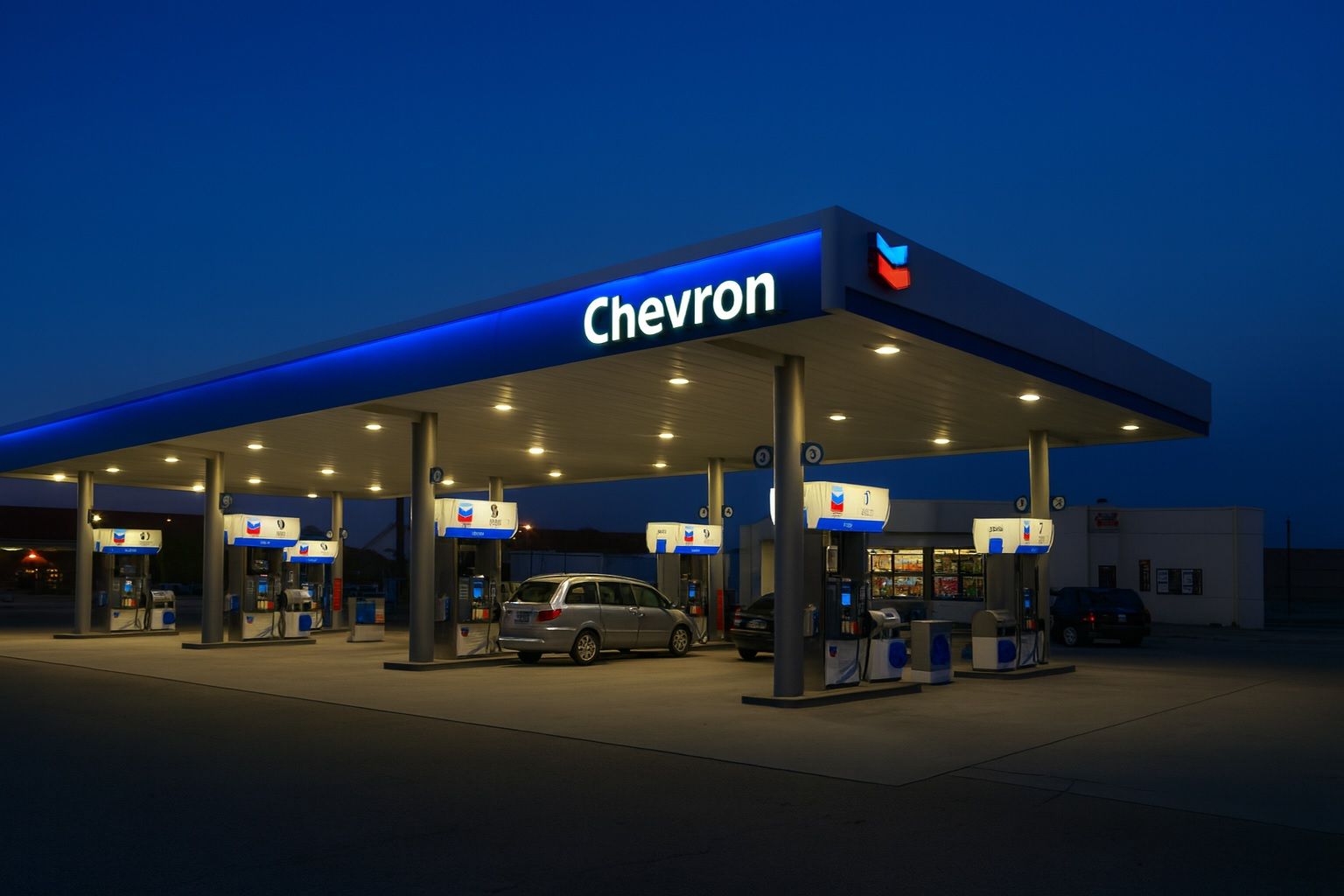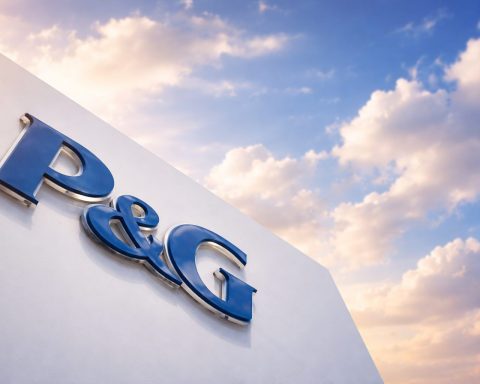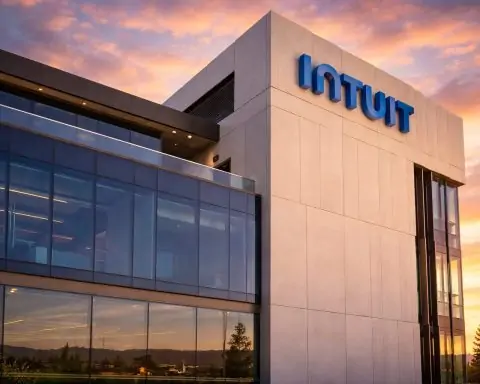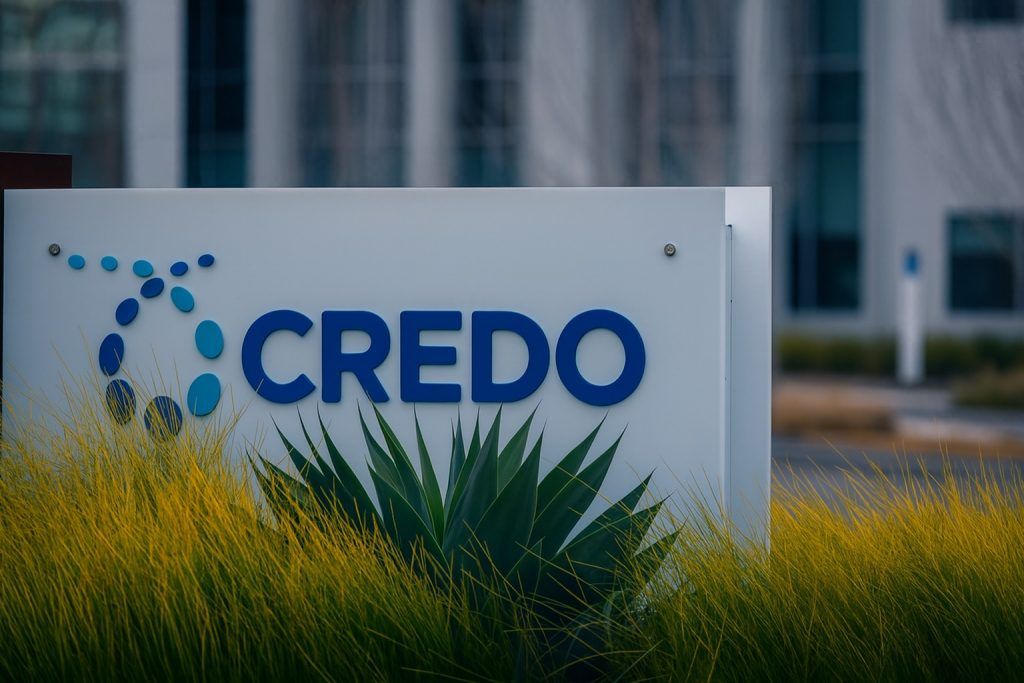- Price Action: CVX shares closed around $153 on Oct. 17, 2025 [1], essentially flat in the past week (trading in roughly a $150–154 range) as oil prices have wobbled [2] [3].
- Pipeline Sale: Chevron is selling Denver-Julesburg (Colorado) pipeline assets for >$2 billion [4] [5], part of a cost-cutting push.
- Hess Acquisition: The company completed its $55B acquisition of Hess in July, adding offshore oil projects (e.g. Guyana) to its reserves [6]. Integration costs have pressured near-term earnings, but record production from the Permian and Guyana helped Q2 output [7] [8].
- Refinery Fire: An early October blaze at Chevron’s 285,000 bpd El Segundo, CA refinery shut multiple units, but there were no injuries [9] [10]. Chevron reported the fire was extinguished by Oct. 3 [11].
- Earnings & Cash: Q2 2025 EPS fell to $1.45 (net) vs $2.43 a year ago [12] (one-time items aside, $1.77 adj. EPS vs $2.55 prior [13]). Weaker oil prices and merger costs weighed on profits, but “record production and exceptional cash generation” kept free cash high [14] [15]. Chevron returned $5.5B to shareholders in Q2 (13 straight quarters above $5B) [16].
- Oil Market: Global oil supply has risen faster than demand, with OPEC+ pumping aggressively. The IEA warns of a 4 million-barrel/day surplus in 2026 [17]. Brent crude settled around $62–64/bbl in mid-Oct [18] [19]. This oversupply pressure caps profits for Chevron and peers.
- Analyst Outlook: Wall Street is broadly bullish. 16 analysts rate CVX a “Buy” with average targets near $170 [20]. UBS, Wells Fargo and others have $190–$197 targets [21] [22]. Consensus price-targets imply roughly 10–15% upside [23] [24]. Chevron’s 4.5% yield (highest among majors) also cushions investors [25] [26].
- Strategic Focus: Chevron is cutting costs and assets. It will slash ~20% of its workforce [27] [28] and divest non-core units. Growth drivers include ramping Guyana offshore, Eastern Mediterranean gas, and low-carbon projects [29] [30]. Management says Hess integration is on track and an investor day in Nov will detail long-term plans.
- Peer Comparison: Like Chevron, ExxonMobil and BP face earnings pressure. All have trimmed share buybacks and announced job cuts as oil averages well below $80 [31] [32]. Chevron’s ~4.5% yield sits above Exxon’s ~3.5% but below BP’s ~6.0% [33] [34]. Fundamentally, Chevron’s clean balance sheet and dividend stand out, but sector headwinds (low oil, transition risks) affect all majors similarly.
CVX Stock Price & Recent Performance
Chevron (NYSE: CVX) has traded mostly sideways in October 2025. After closing ~$151.71 on Oct. 16, 2025, the stock rose ~0.9% to $153.08 on Oct. 17 [35]. The share price has lingered in a narrow $150–154 range this week [36], roughly flat over 5 days. Year-to-date CVX lags the broad market, reflecting weaker oil and the drag from the Hess merger [37]. Still, technical indicators show the stock holding key support in the mid-$140s [38]. Trading volume is moderate (about 7–8M shares daily) and volatility is low, mirroring the calm in global energy markets.
Recent moves broadly tracked oil: Brent crude fell from ~$158 in mid-Sept to ~$147 in late Sept, then bounced back into the low-$60s in October [39]. Chevron, conversely, dipped from the upper $150s to ~$147 in early Oct before recouping to the $152–153 area by Oct. 17 (as Brent hovered ~$62–64) [40]. Overall, CVX is near the middle of its 2025 trading range [41] (52-week range: $132–169).
Major Company News & Strategic Moves
Pipeline Asset Sales: On Oct. 3, Reuters reported that Chevron is marketing its midstream pipeline network in Colorado’s DJ Basin, likely for >$2 billion [42]. These assets (from the 2020 Noble Energy deal) generate roughly $200M EBITDA [43]. Bankers say the sale (if closed) would free up capital for higher-return projects. CEO Mike Wirth has signaled that Chevron will “challenge itself to divest assets that take money away from more profitable prospects” [44], and confirmed a target to cut ~20% of overall headcount this year [45]. This cost-cutting drive—along with divestitures—aims to improve margins as oil revenues come under pressure.
Hess Merger Closed: The $55 billion acquisition of Hess closed in July 2025, after a long legal battle with ExxonMobil [46]. This added major offshore oil projects (notably Guyana) to Chevron’s portfolio [47] [48]. Hess should boost Chevron’s long-term reserves and output, but it also diluted near-term earnings (Hess shares and integration costs hit GAAP profits). In Q2 (first full quarter with Hess), Chevron reported net income of $2.5B ($1.45/share) down from $4.4B a year earlier [49]. On the plus side, Q2 saw “record production” – including ~1.0M barrels-per-day in the Permian [50] – and “exceptional cash generation” that allowed a $5.5B return to shareholders [51] [52]. Looking ahead, analysts expect Q3 EPS around $1.65 (flat or slightly down from Q2) as Hess synergies ramp up [53]. Management says Hess integration is on track; an investor day is scheduled for Nov. 12 to detail long-term growth, capex and return targets.
Refinery Incident Resolved: On Oct. 2, a fire broke out in the jet-fuel unit at Chevron’s El Segundo refinery (285K bpd) near Los Angeles [54]. The blaze forced a temporary shutdown of hydrocracker and other units, raising local fuel costs. Importantly, there were no injuries [55]. By the next day Chevron confirmed the fire was extinguished and is investigating the cause [56]. While the incident is a short-term headwind (lost output and restart costs), analysts stress it is unlikely to dent Chevron’s fundamentals or brand. The refinery supplies ~20% of Southern California’s gasoline and a large chunk of its jet fuel, so markets watched carefully – U.S. jet fuel futures briefly spiked ~33¢/gal on the news [57]. Chevron’s response (no casualties, quick containment) was reassuring.
Leadership Changes: On Oct. 7, Chevron announced that Kevin McLachlan (ex-TotalEnergies) will become Vice President of Exploration, effective Nov. 1 [58]. He succeeds long-time exec Liz Schwarze, who will retire early next year. The hire underscores Chevron’s push into new oil frontiers (Guyana, East Med, Namibia, etc.) after management voiced disappointment with recent dry holes [59]. CEO Mike Wirth said earlier that recent exploration results were “narrow” but emphasized the need to refocus on growth areas [60]. McLachlan’s track record at other majors (TotalEnergies, Exxon) is expected to help revitalize Chevron’s upstream prospects.
Energy Market & Geopolitical Context
Global oil dynamics have swung towards ample supply. OPEC+ output has surged: Saudi Arabia and Russia are unwinding cuts to pumpaggressive volumes. The IEA’s Oct. 2025 Oil Market Report forecasts a 4M bpd surplus by 2026 [61]. Brent crude languished in the low-$60s in October (multi-month lows) [62], down from the $80s seen earlier in 2024. U.S. crude and natural gas prices similarly eased. Overall, slower demand growth (weaker industrial activity, rising EV adoption) meets more supply from U.S. shale and Middle East output.
Geopolitical factors are a mixed bag. Renewed sanctions on Iran and Venezuela loom, but both countries have thus far met quotas. In the Middle East and Ukraine, conflicts remain wildcards that could abruptly tighten supplies. For example, U.S. weapons shipments to Ukraine or flare-ups in the Red Sea can spook markets. Conversely, a string of mild winter forecasts and central bank caution on stimulus could sap oil demand. Notably, President Trump recently suggested India might stop buying Russian oil [63], which could reshape global flows (though India’s moves remain fluid).
Regulatory and environmental trends also influence Chevron’s outlook. California is losing refining capacity (Phillips 66 and Valero closures), which could support West Coast margins if demand holds. Meanwhile, U.S. policy has generally shifted to favor oil & gas investment (pipeline approvals, relaxed EPA rules) – a contrast with some Europe’s stricter climate stance. However, long-term energy transition pressures mean Chevron (and peers) are also investing in carbon capture, hydrogen and biofuels. Chevron has earmarked ~$10 billion for low-carbon projects through 2028 (by some accounts), viewing it as a growth avenue [64].
Analyst Insights & Forecasts
Wall Street’s mood on CVX is positive. The average 1-year price target is roughly $170–173, implying ~10–15% upside [65] [66]. For instance, UBS recently reiterated a $197 target [67], and Wells Fargo just initiated coverage at $190 [68]. Even banks with more neutral ratings have mid-$160s targets (e.g. Scotiabank $165 [69], Raymond James $160 [70]). Analysts point to Chevron’s strong free cash flow and dividend (4–4.5% yield) as compelling.
However, estimates range widely. Some forecasters caution that if oil stays low, CVX could underperform. Zacks’ model, for example, recently gave Chevron a “Sell” rank after trimming 2025 EPS forecasts to $7.45 [71]. On balance, the consensus of major brokers is bullish, and the stock trades near a decade-low valuation on price/earnings (around 19x forward) despite the big dividend [72] [73]. Validea’s Peter Lynch screen scored Chevron 93% (very strong) on growth vs. valuation [74]. In short, fundamental models favor CVX if oil firms recover.
Investors are also eyeing the Nov. 12 investor day for fresh guidance. Many analysts will watch whether management tightens its capex budget or adjusts the dividend policy. For now, Chevron continues its hefty buybacks – ~$13+ billion per quarter returned to holders recently [75] – and has said it can sustain share repurchases in the $10–20B range as long as oil doesn’t collapse [76]. Meanwhile, further cost cuts (up to $1B savings from Hess integration) and project ramp-ups (e.g. Guyana FPSO, U.S. shale wells) could boost earnings late next year [77] [78].
Peer Comparison: ExxonMobil, BP & Big Oil
Chevron’s fundamentals compare favorably to its big-oil peers, but all face a tougher near-term outlook. ExxonMobil (XOM), for example, saw Q2 EPS plunge ~27% year-on-year [79]. Exxon’s stock (around $112) yields ~3.5% [80], below Chevron’s ~4.5%. Like Chevron, Exxon is cutting costs and debt, and recently predicted a tighter market only in the medium term [81]. Exxon beat Q2 estimates by focusing on high-value barrels, but it still signaled EPS will stay flat or down in Q3 given weaker prices [82].
BP (BP.L), trading near £33 ($~36), yields about 6.0% [83]. BP’s high payout partly reflects its low share price (down ~20% this year). BP also curtailed buybacks and is shifting toward renewables (wind, biofuels) to stabilize earnings. EU regulations and customer transitions (electric vehicles) hit BP’s refining margins. Overall, Chevron’s dividend yield is in the upper range of majors, making CVX attractive for income investors.
All big oil stocks have announced workforce cuts. A Reuters analysis noted over a dozen energy firms (Chevron, Exxon, Shell, BP, etc.) are slashing jobs as prices stay under $80 [84]. Chevron’s ~20% reduction and peer belt-tightening underscore the shared challenges. On reserves and growth potential, Chevron’s Hess deal arguably gives it an edge: adding Guyana projects with industry-leading returns [85]. Yet, if oil remains sub-$65, none will escape margin compression.
Conclusion
In sum, Chevron’s stock is digesting mixed signals. The technical picture is neutral—CVX is neither breaking out nor collapsing in late 2025. Recent news is mostly favorable for the long term (pipeline sale boosts cash, Hess adds reserves, no refinery accident injuries) even as it reminds investors that oil-linked profits will be cyclical. Analysts see a solid upward bias: most rate it a Buy with targets around $170+, and the high-end forecasts hit ~$190–197 [86] [87]. Their caution is tied to oil. Should crude extend its rally (e.g. geostrategic shocks), Chevron could swiftly recapture $160+ levels. Conversely, a renewed slump could press the stock back toward the low-$140s.
For investors weighing CVX now, key factors include: how fast global oil demand grows (especially in China/India), OPEC discipline, and U.S. shale trends. Chevron’s strong balance sheet, high yield and robust free cash flow offer a buffer. Its strategic moves – cutting costs and honing in on high-return projects – position it to weather the downcycle better than some peers. Still, the outlook is highly correlated with oil prices. In the coming weeks, the earnings reports of Exxon and BP (late Oct) and OPEC statements will provide additional clues. As one market strategist quipped, “Chevron may be one of the safest bets in oil, but it’s still riding the wave of a largely unpredictable commodity.” [88] [89]
Sources: Stock and market data from Reuters and Investing.com [90] [91]; company news from Reuters and press releases [92] [93]; analysis and forecasts from TS2.Tech [94] [95], Benzinga [96] [97], and others.
References
1. ts2.tech, 2. ts2.tech, 3. ts2.tech, 4. ts2.tech, 5. www.reuters.com, 6. ts2.tech, 7. ts2.tech, 8. www.reuters.com, 9. www.reuters.com, 10. ts2.tech, 11. www.reuters.com, 12. ts2.tech, 13. ts2.tech, 14. www.reuters.com, 15. ts2.tech, 16. ts2.tech, 17. ts2.tech, 18. ts2.tech, 19. ts2.tech, 20. ts2.tech, 21. ts2.tech, 22. www.benzinga.com, 23. ts2.tech, 24. www.benzinga.com, 25. ts2.tech, 26. www.reuters.com, 27. ts2.tech, 28. www.reuters.com, 29. ts2.tech, 30. ts2.tech, 31. www.reuters.com, 32. www.reuters.com, 33. www.marketbeat.com, 34. www.marketbeat.com, 35. www.reuters.com, 36. ts2.tech, 37. ts2.tech, 38. ts2.tech, 39. ts2.tech, 40. ts2.tech, 41. www.reuters.com, 42. www.reuters.com, 43. www.reuters.com, 44. www.reuters.com, 45. www.reuters.com, 46. www.reuters.com, 47. www.reuters.com, 48. ts2.tech, 49. ts2.tech, 50. ts2.tech, 51. www.reuters.com, 52. ts2.tech, 53. ts2.tech, 54. www.reuters.com, 55. www.reuters.com, 56. www.reuters.com, 57. ts2.tech, 58. www.reuters.com, 59. www.reuters.com, 60. www.reuters.com, 61. ts2.tech, 62. ts2.tech, 63. www.reuters.com, 64. markets.financialcontent.com, 65. ts2.tech, 66. www.benzinga.com, 67. ts2.tech, 68. www.benzinga.com, 69. www.benzinga.com, 70. www.benzinga.com, 71. www.nasdaq.com, 72. www.reuters.com, 73. www.benzinga.com, 74. ts2.tech, 75. ts2.tech, 76. www.reuters.com, 77. www.reuters.com, 78. ts2.tech, 79. www.reuters.com, 80. www.marketbeat.com, 81. www.reuters.com, 82. www.reuters.com, 83. www.marketbeat.com, 84. www.reuters.com, 85. ts2.tech, 86. ts2.tech, 87. www.benzinga.com, 88. www.reuters.com, 89. www.reuters.com, 90. www.reuters.com, 91. ts2.tech, 92. www.reuters.com, 93. www.reuters.com, 94. ts2.tech, 95. ts2.tech, 96. www.benzinga.com, 97. www.benzinga.com







